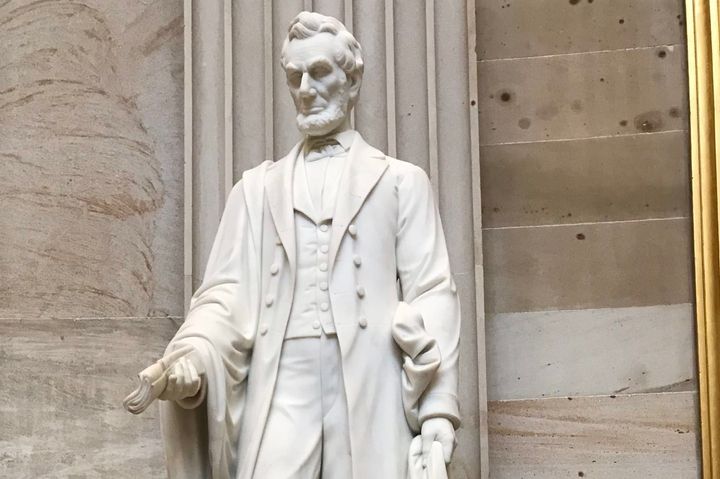Super-Criteria for Leadership Recruiting

Photo credit: Chris Barbalis/StockSnap.io
The leadership recruiting process unleashes many emotions in a hiring manager. When we start the process, we are hopeful of finding great people. As it continues, we experience frustration as we screen more resumes than we expected. When we connect with a candidate on a phone interview, we return to hopefulness. We may revisit disappointment after a morning on the phone with a group of candidates we know aren’t right for the position.
When a few candidates survive the phone screen and arrive at our offices, we again return to optimism and the relief of help on the horizon. We sit down and begin the interview dance, a process that may highlight our lack of mastery as interviewers, and which often devolves into us telling as many stories about ourselves and the company as we are asking the candidate to share about themselves. We end the interview smiling and feeling good but, a bit later, develop some concern that we didn’t find out enough about the candidate to make an informed decision. The candidate leaves, and assuming we had them speak with other team members during their visit, we gather their input. We then retreat to our space to consider the pros and cons of the individual and, if all goes well, within an hour, we overcome our sticking points and know who we want to add to the team.
We ask HR to prepare an offer letter, subject only to checking background references and provide a verbal offer to the candidate, hoping for a quick yes. The yes may come, but it often takes a few more days of iterations to get to acceptance. We hash out the terms of the agreement, adding one week of vacation more than we offered initially and settle on a start date. HR phones two or three background references who usually speak glowingly or not at all about the candidate because they are objectively tremendous or because that company’s legal team requires only neutral references. (A neutral reference usually provides dates of service and title, and little else). We are fortunate if we find the helpful former boss that adds 50% embellishment beyond the policy because she is human and has been on the other side of the reference check before. This allows HR to report back to us with the happy news that everything checks out.
After all the hard work, we are relieved and excited to welcome our new team member.
But, have we hired the right person?
Three Super-Criteria
There are many things to consider during recruiting, but here are three super-criteria I use to hire leaders:
- #1 mindset hires #1s, #2 mindset hires #3s. If we recruit for a leadership position with a #1 mindset, we endeavor to find a candidate with skills we lack, who brings diverse experience and thinking, makes our team stronger and more capable, has the desire to lead, and possesses significant to unlimited growth potential in the company. If we arrive at the same point with a #2 mindset, defined by insecurity and scarcity, we may settle on a candidate who contributes initially but has limited growth potential. And if we hire a manager who is unlikely to grow into an expanded role, we are doing a disservice to ourselves, the team, and the company. Lasting success requires us to build collaboration skills and stronger team connectivity. It doesn’t allow us to hold information close to the vest or hire people into management positions that don’t have the potential to grow and perhaps succeed us. The bottom line is that we must continue to learn, grow, and evolve to be competitive and deliver higher value. Importantly, when the next role becomes available, it will go to the leader who has developed her people to run things in her absence. Enlightened self-interest should drive us to pick the best people we can attract, but it will only do so if we embrace better and best. The lack of a strong bench is a significant barrier to profitable growth for any company, and a strong bench expands our capacity and capability to serve a growing, high-performance organization.
Fundamental distinction: Making ourselves smaller doesn’t make other people more significant, it merely limits our potential growth and contribution.
2. Tenure and experience are different things. When considering a candidate’s background, it’s imperative to determine whether he has ten years of experience or one year repeated nine times. This isn’t meant to be cute; it’s a distinction with a difference. To be clear, this is not about the specialist candidate (i.e., data scientist or programmer) who spent ten years mastering her skills. This is the manager who has not expanded his knowledge through broad reading, taken on challenges outside of his comfort zone, made decisions with clear consequences, or raised his hand for the tough assignment, if that is the experience we seek in our next leadership hire. And this is the experience we should be chasing in our next leadership hire.
3. Attitude and aptitude. Role and task competence are table stakes for a new leadership hire. The most common mistake I’ve made as a hiring manager, by a 10x factor, came when I hired first for aptitude rather than attitude. On a training difficulty scale of 1 to 10, with ten being nearly impossible to achieve, aptitude training is a 3 and attitude change is a 9. To gauge attitude, try to understand how the candidate works with others (e.g., has led teams through challenges and prefers to function mainly as an individual contributor). How does she perceive customers (e.g., no opinion, or somebody else’s problem, or the people that pay all our salaries)? How do they view the world (e.g., a world of possibilities, or a world of scarcity, limitation, and lack)? Reconcile this newfound information with your current or desired culture. Is the person a fit or not? Does she significantly improve the capabilities of the team? Is he somebody you want to spend ten hours a day with over a period of several years?
Takeaway: Bringing an abundance mindset to leadership recruiting efforts helps build a stronger team. Hiring curious people with track records of increasing responsibility, professional growth, and leadership development, increases bench strength. A team of competent people with a collaborative attitude and customer focus create high-performance cultures and more consistent business results. As with all leadership activities, we need to make sure our own mindsets are correct before conducting a recruiting process.


